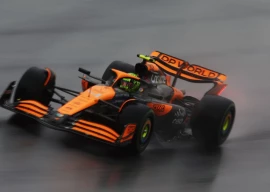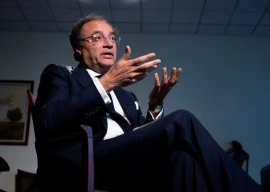
RAWALPINDI:
Problems faced by women due to inadequate public transport in the city are getting worse in the hot summer days. However, a discussion with the relevant officials suggests that the government would not be able to introduce better transport facilities any time soon.
The only public transport running on the main roads and on small routes are minibuses and pick-ups. They do not suit women as the reserved seats for them are not enough.
“We have to wait for a long time on the stops mainly on the busy Benazir Bhutto Road as only two seats besides the driver are reserved for women,” said Sher Bano who works in a private firm in Islamabad and has to commute between the twin cities every day.
“Often the seats are occupied and the wagon conductors hesitate to let the ladies sit on the rear seats,” she added. She admitted that women too prefer not sitting with men and it made them “uncomfortable”.
Zahida Bibi, a schoolteacher in Shamasabad, said, “We have to wait longer at the stops because there simply aren’t enough seats for us.”
A usual scene at these bus stops is that whenever a vehicle comes, men rush and grab the seats and sometimes even occupy the ones reserved for women, who are left to wait in the hot weather for another bus.
Bibi said the numbers of female commuters are increasing day by day but in the absence of efficient public transport, it is always really difficult to travel with “respect and convenience”.
Some women think that buses are a better alternative to pick-up vans and minibuses. “When buses were plying on the main roads it was easier and safer for women to travel. The buses had more space reserved exclusively for women,” said another woman waiting for a wagon on a Sixth Road stop. She added that it was particularly hard for women with small children.
Muhammad Anwar, a wagon driver admitted it was difficult for women to get seats at some stops. He blamed the shortage of public transport for the inconvenience. Though the conductors try to accommodate women, they always hestitate in sitting on the rear seats, the driver said.
Malik Sultan Ahmed, head of Rawalpindi Transporters Association, said the union in collaboration with a private company ran a program three months ago to sensitise the drivers and conductors about the problems of female commuters.
“We are ever-ready to address the problems of the female passengers and would cooperate with the Regional Transport Authority (RTA) in this regard,” he said.
But the government, it seems, will not be able to deliver an efficient transport system any time soon. RTA Secretary Asad Kazmi said Punjab government has been trying to win-over investors and introduce big buses in the city for a long time now.
“In 2009 and 2010 the transport authorities invited an expression of interest from public sector to ply buses in Rawalpindi and offered substantial subsidy but no one came up with any proposal,” Kazmi said.
The government has announced to give a grant of 20 per cent upfront subsidy to the investors at the time of launching of the transport and Rs1,200 for each bus every day as operational subsidy in the wake of increase in fuel prices, the official said.
The money proposed in the subsidy is huge and government is only ready to pay in the interest of public commuters as they are not ready to accept hike in fares, he added.
In response to a question the RTA secretary said that CNG buses plying from Raja Bazaar to Rawat were shut down by the owners as the “spare parts” of the China-made vehicles were not easily available.
“The authorities had been in negotiation with the Varan Tours as the company owned a fleet of good buses but there are certain issues that are still to be resolved with the company,” he added.
Published in The Express Tribune, May 20th, 2011.









































1713521455-0/Untitled-design-(9)1713521455-0-270x192.webp)















COMMENTS
Comments are moderated and generally will be posted if they are on-topic and not abusive.
For more information, please see our Comments FAQ